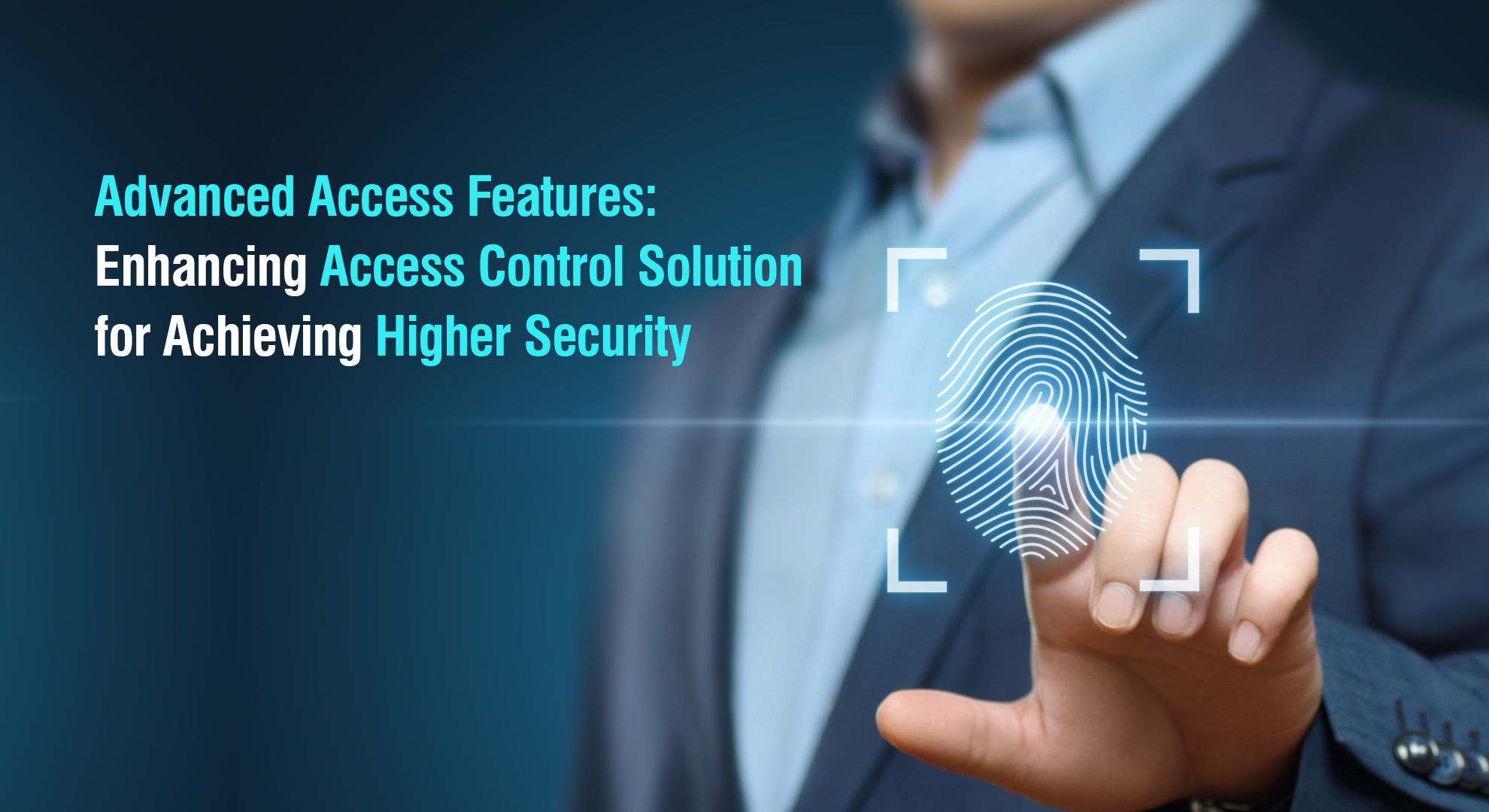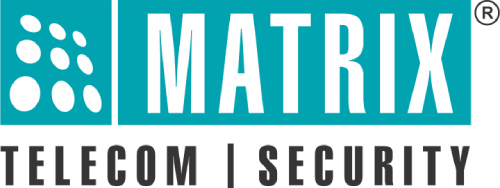
![]()
In today’s modern world, where security is a top priority, the need for effective access control has become paramount. Organizations across various industries understand the importance of safeguarding their premises, assets, and sensitive information. Basic access control measures, such as simple access control, locks, and keys, are no longer sufficient to meet the evolving security challenges.
While basic access control measures may provide some level of security, they often fall short when it comes to meeting the diverse needs of different industries. Industries such as high-security bank vaults and research organizations require more robust solutions that go beyond traditional lock and key systems. This is where advanced access control features come into play. These cutting-edge features along with a biometric access control system are designed to address the unique security concerns of various industries and provide enhanced control over access to sensitive areas.
This blog highlights the critical role of advanced access control features in ensuring comprehensive security and efficiency within organizations. We will explore a range of cutting-edge access control features that form the backbone of a robust access control infrastructure. These features are specifically designed to bolster security, increase efficiency, and mitigate risks within organizations. By implementing these advanced features through their access control solution, organizations can stay one step ahead in the ever-changing landscape of security threats.
Check out Some of the Access Control Features that help enhance Security:
- Absentee Rule:
The Absentee Rule sets a maximum number of days for non-use of an ID or credential. If the ID remains unused for the specified period, the user will be automatically disabled or denied access. This feature helps organizations maintain tighter control over access rights by deactivating credentials that are not actively used, reducing the risk of unauthorized access.
- Occupancy Control:
Occupancy Control functionality enables the system to monitor and control the number of users permitted within a secured area or controlled zone. This feature is particularly useful for high-security environments such as bank vaults or research organizations where allowing only one person at a time is critical or in meeting rooms of corporate offices to restrict the count beyond a certain number. It helps prevent unauthorized individuals from entering restricted areas and ensures that only authorized users are present within the controlled zone.
- Use Count Control:
Use Count Control sets a maximum limit on the number of times an authorized user can utilize their credential to enter or exit a controlled area within a specific time frame, typically within a minute. Once the maximum use count is reached, the user’s credential is automatically blocked. This feature helps organizations prevent credential misuse or sharing by enforcing strict limitations on its usage.
- Dead Man Zone:
The Dead Man Zone feature is designed to track the safety and security of a user during the performance of a specific task. It requires the user to present their card or credential within a pre-defined time period, known as the “dead man time.” If the user fails to present their credential within this time, an alert is triggered, indicating a potential safety or security concern. This feature is often used in hazardous environments or critical operations such as the mining industry where constant monitoring of personnel is necessary.
- Do Not Disturb:
The Do Not Disturb (DND) feature allows users to declare that a particular zone should not be accessed by others for a specific period of time. It ensures that users inside the zone are not disturbed by unauthorized individuals. This feature is particularly useful in sensitive areas such as laboratories, executive offices, or private meeting rooms where privacy and focus are crucial.
- Man Trap:
A Man Trap, also known as an interlock or airlock system, provides safety, security, and environmental control between two or more rooms. It ensures that opening any door triggers the locking mechanism of all other doors until the initially opened door is closed. Man traps are commonly used in high-security areas where strict control of entry and exit is required to prevent unauthorized access.
- VIP Access:
The VIP Access feature allows administrators to grant VIP users special access privileges to specific doors or areas for enhanced security. VIPs may include executives, high-ranking officials, or individuals requiring heightened protection. By granting VIP access, organizations can ensure that authorized individuals receive tailored security measures and restricted access to certain areas.
- Visitor Escort:
The Visitor Escort rule requires all visitors to be accompanied by an escort and mandates that the visitor’s credential be displayed along with the escort’s credential within a stipulated time period. This feature helps maintain strict control over visitor access and ensures that visitors are properly supervised while inside the premises. It enhances overall security and mitigates the risk of unauthorized access by unaccompanied visitors.
- Anti-Pass Back:
The Anti-Pass Back (APB) feature prevents unauthorized access by enforcing a rule that users must pass through both an entry and exit reader before their ID will be accepted again at the designated entry reader. This feature ensures that users cannot pass their ID card back to another person to gain entry into an access-controlled area. It helps prevent credential sharing or misuse, enhancing security within the organization.
- Guard Tour:
The Guard Tour functionality enables the system to monitor and track the movements of security guards within a facility during specified time periods. Security guards are required to show their configured credentials at designated checkpoints or door controllers within a given amount of time. This feature ensures that guards are patrolling the premises as scheduled, providing an additional layer of security, especially during non-working hours.
- Access Route:
The Access Route functionality allows administrators to define an access policy that restricts users to accessing only specified doors with specific access levels in a predefined route, whether sequenced or unsequenced. This feature ensures that users follow designated paths and only access areas relevant to their permissions. It helps prevent unauthorized entry into restricted zones and maintains a controlled flow of individuals within the premises. For example, employees can be taken across a corridor selectively with no access to the server room using the access rule to prevent the employees to access the route going adjacent to the server room.
- Functional Group:
The Functional Group feature is used to group users with similar profiles and access policies. It simplifies the management of security and access control policies by categorizing users based on their roles, responsibilities, or access requirements. By assigning users to functional groups, administrators can efficiently apply consistent access rules, making it easier to manage and enforce security protocols across the organization.
- Time Schedule:
The Time Schedule feature allows the system to grant access to users for specific access zones within specified time periods. Administrators can define time frames during which users are granted access to certain areas. This feature ensures that access rights are restricted to authorized individuals during specified hours, enhancing security and reducing the risk of unauthorized access.
- Elevator Access Control:
In high-rise corporate buildings, Elevator Access Control integrates with the overall Access Control Solution. It enables employees or users to access specific areas or floors within the building by utilizing their credentials. This feature enhances both security and convenience, allowing organizations to restrict elevator access to authorized personnel only, minimizing the risk of unauthorized individuals gaining entry to sensitive areas.
- Access Group:
Access Groups allow the programming of time zone-based access levels. When assigned to a user, the system determines the user’s access level at any particular time based on the assigned Access Group. This feature provides flexibility in defining access permissions based on time, allowing organizations to grant different access rights to users depending on the time of day or specific time zones.
- 2-Person Rule:
The 2-Person Rule is a security feature that requires two valid user entries within a specified time frame to allow access to a secured zone. This control mechanism adds an extra layer of security, especially in critical areas such as cash rooms, research labs, or sensitive document storage. By enforcing the 2-Person Rule, organizations ensure that access to high-security zones is granted only when two authorized individuals are present simultaneously.
- First-In User:
The First-In User rule uses a card or fingerprint credential from the user declared as the First-In User to unlock access to a particular zone. The access control system remains in lock mode until a valid First-In User is detected, whose effective working hours overlap with the current time. This rule allows access to all authorized users until the working hours of the First-In User are no longer valid. It simplifies access control by linking the zone’s working hours to the first detected user, ensuring efficient access management.
- Access Rule:
The Access Rule option allows the creation of conditional rules for specific time duration to access doors. Administrators can define custom rules specifying when users are allowed or denied access to particular doors based on specific conditions. This feature offers fine-grained control over access permissions, enabling organizations to tailor access rights to their specific requirements and security protocols.
These access control features collectively contribute to enhancing security, efficiency, and control within an organization’s premises.
Wrapping
By leveraging such advanced access control features along with a biometric access control solution, organizations can tailor their security measures to meet specific requirements, ensuring that authorized individuals have appropriate access privileges while minimizing the risk of unauthorized entry.
In conclusion, investing in a robust access control system with advanced features not only strengthens security but also improves operational efficiency, reduces risks, and fosters a safe and secure environment for employees, visitors, and valuable assets. By leveraging these cutting-edge capabilities, organizations can proactively protect their facilities, maintain compliance, and instill confidence in their stakeholders.
Remember, an effective access control system is not a one-size-fits-all solution. It is essential to assess your organization’s unique security needs, consult with experts, and select a solution that aligns with your requirements. As organizations keep evolving, an evolving security solution will become a necessity for the complete management of their assets and employees. With over 30 years of experience in creating tailored security solutions, Matrix provides top-notch services for your organization.
Connect with our experts to get the best biometric access control and time-attendance solutions for your organization!

